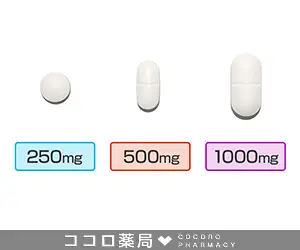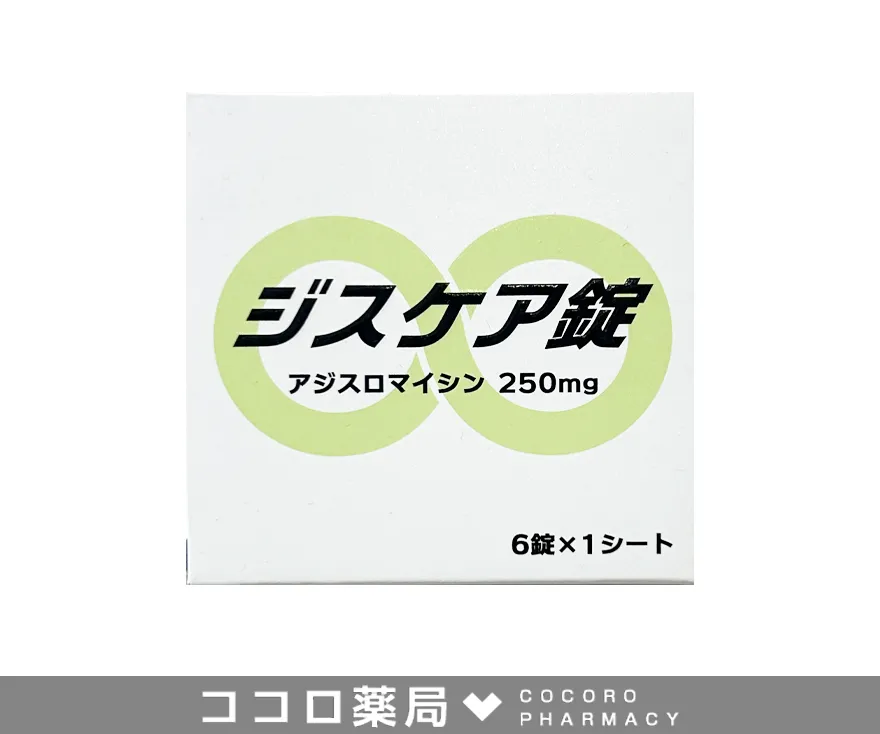陽川先生の略歴は以下の通りです。
- 略歴
三重大学医学部 卒業
三重大学大学院 修了
三重大学医学部附属病院
松阪中央総合病院
紀南病院
三重大学医学部附属病院
松阪中央総合病院
てらだ産婦人科(伊勢)
ヒロクリニック大阪駅前院 院長








更新日:2025/6/9
アジーは、性感染症のクラミジア治療で第一選択となるアジスロマイシンを有効成分としています。
クラミジアをはじめ、細菌が原因となる感染症の治療に効果的です。
| メーカー | シプラ(Cipla) |
|---|---|
| 有効成分 | アジスロマイシン水和物 |
| 効果 | クラミジア感染症・その他細菌性感染症の改善 |
| 副作用 | 下痢や嘔吐など |
| 用法 | 症状に合わせて服用 |
アジスロマイシンは、クラミジア・トラコマチスやブドウ球菌をはじめ、多様な細菌に対して効果を発揮する抗生物質です。細菌のタンパク質合成を阻害して死滅させ、細菌感染症の症状を治療します。
アジーには、含有量の異なる250mg錠、500mg錠、1000mg錠の3種類があります。

| 個数 | 販売価格(1錠あたり) | 販売価格(箱) | ポイント | 購入 |
|---|---|---|---|---|
| 10錠 | 256円 | 2,560円 | 76pt |
| 個数 | 販売価格(1錠あたり) | 販売価格(箱) | ポイント | 購入 |
|---|---|---|---|---|
| 5錠 | 492円 | 2,460円 | 73pt | |
| 15錠 | 464円 | 6,960円 | 208pt |
| 個数 | 販売価格(1錠あたり) | 販売価格(箱) | ポイント | 購入 |
|---|---|---|---|---|
| 6錠 | 493円 | 2,960円 | 88pt | |
| 18錠 | 442円 | 7,960円 | 238pt |






①1万円以上で送料無料
1回の注文で10,000円以上だった場合、1,000円の送料が無料となります。
まとめ買いをすると1商品あたりのコストパフォーマンスが高くなるためおすすめです。
②プライバシー守る安心梱包
外箱に当サイト名や商品名が記載されることはないため、ご家族や配達員など第三者に内容を知られることは御座いません。

③100%メーカー正規品取り扱い
当サイトの商品は100%メーカー正規品となっており、第三者機関による鑑定も行っております。
商品の破損などがあった場合は再配送などにて対応させて頂きますので、ご連絡頂ければ幸いです。

④いつでも購入可能 処方箋不要
サイト上では24時間いつでもご注文を受けております。
また、お電話によるご注文も受け付けておりますのでネットが苦手な方はお気軽にどうぞ。

⑤商品到着100%
商品発送後はお荷物の追跡状況が分かる追跡番号をご案内させて頂きます。
郵便局には保管期限がありますのでご注意ください。
・自宅配達で不在だった場合の保管期限・・・16日間前後
・郵便局留めとした場合の保管期限・・・7~30日間

⑥コンビニ決済利用可能
ご近所のコンビニにていつでもお支払可能です。
セブンイレブンに限り店舗での機械操作を必要とせず、手続き完了後に表示されるバーコードや払込票番号をレジに提示することでお支払い頂けます。


三重大学医学部 卒業
三重大学大学院 修了
三重大学医学部附属病院
松阪中央総合病院
紀南病院
三重大学医学部附属病院
松阪中央総合病院
てらだ産婦人科(伊勢)
ヒロクリニック大阪駅前院 院長
アジー 250mg x 10錠
2,560円
ポイント:76pt
10,000円以上購入で送料無料
在庫あり

アジーは「クラミジアや副鼻腔炎など細菌感染症を1錠で確実に治療できる即効性」「250mgから1000mgまで用途に応じた服用量調整」「通販で手軽に入手できる利便性」「軽度な下痢・吐き気・腹痛などの副作用」が口コミで高く支持されています 。
さらに「病院処方薬の約3分の1の価格」「ピルカッターで割って持ち運びやすい」「継続使用で耐性リスクが低い」といったコスパと手軽さも評価され、常備薬として安心感を得られる製品です。
多くのユーザーが「たった1錠服用でクラミジアが完治した」「10日間服用後に陰性判定」「副鼻腔炎も2〜3日で症状が消えた」と、その確かな治癒力を実感しています。
用量を適宜250mgや1000mgに調整することで、性病から咽頭炎まで幅広い感染症に対応できる点が好評です。
「錠剤が大きいがピルカッターで簡単に半分・4分の1に分割できる」「寝る前に胃薬と一緒に飲むと副作用が緩和」「通販購入から最短1週間で届く」など、少量ずつ安全に試しやすい服用法とスムーズな入手フローが高く評価されています。
副作用では「4割ほどが軽度の下痢を経験」「7時間後に激しい下痢と吐き気があった」「一部で腹痛や血便報告」などの消化器症状が見られますが、ほとんどは数時間〜1日で改善し、「食後服用」や「水分多め」で緩和できるとの声が多数寄せられています。
成分が同じため、効果に違いはありません。ただし、配合されている成分量が違っている場合があり、服用方法が変わることがある点には注意が必要です。
アジーはクラミジア感染症の治療に使用される抗生物質です。また以前は、淋病の治療にも使用されていましたが、現在は耐性菌などの登場によって使われることはありません。
深在性皮膚感染症やリンパ管・リンパ節炎、扁桃炎など幅広い感染症に効果があります。これは、有効成分のアジスロマイシンがさまざまな細菌に対して効果を発揮するためです。
アジーは、肺炎の治療にも有効とされています。肺炎球菌やインフルエンザ菌、レジオネラ・ニューモフィラなど幅広い起炎菌に対して抗菌活性を示し、急性感染症の治療に用いられます。
アジーは食事の影響を受けないため、食前でも食後でも服用していただけます。
アジー1000mgを1回で服用することで治療することができます。
アジーは、通常成人では1日1回、500mgを3日間連続して経口服用します。感染症の種類によっては異なる投与方法が指示される場合があるため、必ず医師の指示通りに服用することが大切です。
基本的には水で服用してください。牛乳やジュース、アルコールなどはアジーの吸収に影響を与える可能性があります。
また、アルコールは副作用を強めるおそれもあるため、服用時は控えるようにしてください。
主な副作用として、発疹、下痢、腹痛、吐き気などがあります。他にも重篤な副作用としてアナフィラキシーなどもあるためご使用前にご確認ください。
アジスロマイシンに対して合併症や既往歴のある方は使用することができません。また高齢者や小児、妊娠中の方または授乳中の方が服用する場合は医師の相談の上、ご使用ください。
アジーの副作用で下痢が続く場合、特に偽膜性大腸炎など重篤な腸障害の可能性もあるため注意が必要です。症状が改善しない場合は、直ちに服用を中止して医師の診察を受けることが推奨されます。
アジーは、QT延長や心室性頻拍(Torsades de Pointes)など、まれに心電図異常を引き起こすことが報告されています。特に心疾患を持つ患者では慎重な使用が求められます。
| 1日の服用回数 | 1回 |
|---|---|
| 1回の服用量 | 1000mg |
| 服用のタイミング | 指定なし |
| 服用期間 | 指定なし |
| 1日の服用回数 | 1回 |
|---|---|
| 1回の服用量 | 500mg |
| 服用のタイミング | 指定なし |
| 服用期間 | 24時間 |
| 1日の服用回数 | 1回 |
|---|---|
| 1回の服用量 | 250mg |
| 服用のタイミング | 指定なし |
| 服用期間 | 24時間 |
| 商品名 | ジスロマック | ジスリン | レボクイン | シプロ | アジシップ | アジードライシロップ | ドキシサイクリン | ジスケア錠 |
|---|---|---|---|---|---|---|---|---|
| 商品画像 |  |  |  |  |  |  |  |  |
| 特徴1 | 病院でも処方される安全な抗菌薬 | 信頼性の高い抗菌成分を配合 | 多様な細菌感染症に効く抗菌薬 | 幅広い細菌感染症に効果を発揮する | クラミジア治療は1回の服用で完了 | ・性感染症以外の細菌感染症にも効果的 | ・細菌感染症や性感染症の症状対策に使える | 1回1000mg服用でクラミジアを治療 |
| 特徴2 | クラミジアは1回の服用で治療完了 | 先発薬ジスロマックより安価に購入できる | 性病のクラミジア治療にも使える | 大手ジェネリックメーカーが手掛ける抗菌薬で安心 | 幅広い細菌感染症に効果を発揮する | ・二次感染やその予防にも効果が期待できる | ・耐性菌の心配が少なく使いやすい | 多様な細菌感染に効果を発揮 |
| 内容量 | 250mg6錠x1箱 | 250mgx5錠 | 250mgx10錠 | 750mgx40錠 | 250mg6錠x1箱 | 200mgx2本 | 100mg10錠x1箱 | 250mgx6錠 |
| 価格 | 6,060円 | 2,760円 | 2,560円 | 6,160円 | 2,360円 | 2,560円 | 3,360円 | 1,860円 |
| 1%以上 | 0.1〜1%未満 | 0.1%未満 | 頻度不明 | |
| 皮膚 | 発疹、蕁麻疹、そう痒症 | アトピー性皮膚炎増悪 | 光線過敏性反応、紅斑、水疱、皮膚剥離、多形紅斑、寝汗、多汗症、皮膚乾燥、皮膚変色、脱毛 | |
| 血液 | 好酸球数増加 | 白血球数減少 | 血小板数増加、好塩基球数増加、顆粒球数減少、プロトロンビン時間延長、血小板数減少 | 貧血、リンパ球数減少、ヘモグロビン減少、白血球数増加 |
| 血管障害 | 血栓性静脈炎 | 潮紅 | ||
| 循環器 | 血圧低下、動悸、血圧上昇 | |||
| 肝臓 | ALT増加 | AST増加、ALP増加、γ-GTP増加、LDH増加、肝機能検査異常 | 血中ビリルビン増加 | |
| 腎臓 | BUN増加、尿中蛋白陽性 | クレアチニン増加、腎臓痛、排尿困難、尿潜血陽性、頻尿 | ||
| 消化器 | 下痢 | 腹痛、悪心、嘔吐、腹部不快感、腹部膨満 | 便秘、口内炎、消化不良、食欲不振、鼓腸放屁、口唇のあれ、黒毛舌、舌炎、舌苔、腹鳴 | 舌変色、口・舌のしびれ感、おくび、胃炎、口内乾燥、唾液増加、膵炎、アフタ性口内炎、口腔内不快感、消化管障害、口唇炎 |
| 精神・神経系 | 頭痛、めまい、灼熱感、傾眠、味覚異常、感覚鈍麻、不眠症 | 失神、痙攣、振戦、激越、嗅覚異常、無嗅覚、神経過敏、不安、錯感覚、攻撃性 | ||
| 感染症 | カンジダ症 | 胃腸炎 | 真菌感染、咽頭炎、皮膚感染、肺炎、β溶血性レンサ球菌感染、膣炎 | |
| 眼 | 結膜炎、眼瞼浮腫、霧視、ぶどう膜炎、眼痛、視力障害 | |||
| 筋骨格系 | 筋肉痛、関節痛、頚部痛、背部痛、四肢痛、関節腫脹 | |||
| 呼吸器 | 咳嗽、呼吸困難、嗄声 | 鼻出血、アレルギー性鼻炎、くしゃみ、ラ音、気管障害、低音性連続性ラ音、鼻部障害、鼻閉、鼻漏、羊鳴性気管支音、痰貯留 | ||
| 耳 | 耳痛、難聴、耳鳴、聴力低下、耳の障害 | |||
| 生殖器 | 卵巣嚢腫 | 精巣痛、不正子宮出血 | ||
| 代謝 | 血中カリウム減少、血中カリウム増加 | 脱水、血中重炭酸塩減少、低カリウム血症 | ||
| 注入部位 | 疼痛 | 血管外漏出、紅斑 | ||
| その他 | 発熱、口渇、気分不良、倦怠感、浮遊感 | 胸痛、無力症、浮腫、低体温、不整脈、咽喉頭異物感、局所腫脹、粘膜異常感覚、疼痛、疲労 |
本製品は海外製のため、期限表記が日本と異なる場合がございます。
パッケージ裏面や側面、シートなどに以下のような表記がされています。
| EXP | 使用期限 例:EXP 12/2025→2025年12月まで使用可 |
|---|---|
| MFG または MFD | 製造日 例:MFG 03/2023 |
| BEST BEFORE | 品質が最も安定している目安日 |


※国や製品により日付の並び(例:月/年、日/月/年)が異なる場合がありますのでご注意ください
EXP(Expiry Date) の表記がなく、MFG または MFDしか記載がないケースがあります。
この場合は MFG(MFD) から2~3年が使用期限の目安です。
※「LOT」や「BATCH」の表記は製造番号であり期限ではありません。

パッケージ例となります。
商品やご注文単位によってはシート単位でのお届けとなる場合が御座います。
外箱に当サイト名や商品名が記載されることはないため、ご家族や配達員など第三者に内容を知られることは御座いません。
喫煙歴30年で頻繁に副鼻腔炎を発症してしまいますが、アジーを服用すると数日間で細菌が消えて痛みも無くなります。薬で治療するしかない病気は通販で買うと通院時間が省けてとても便利です。
一度の服用でクラミジアが治るのか不安でしたが、しっかりと完治して効果に大満足です!アジー1000㎎だと強すぎるという人は250mgがオススメで、いろんな細菌系の病気を治してくれますよ。
もう何年もココロ薬局さんでアジーを購入しています。性病だけじゃなくて歯周病や細菌系の風邪にもかなり効くので、私は常備薬として確保しています。
よく扁桃炎になるから買いました。クラミジアにも効いてくれるから便利ですね。ちょっと錠剤のサイズが大きかったからビックリしましたけど。まぁ、常備してればいつでも飲めるので、持っておいても損はないと思います。
確かに錠剤が大きいですね。少し飲みにくいです。でも、性病はしっかりと治せたので効目は抜群です。
商品口コミの投稿は会員のみ行えるようになっております。
お手数ですが会員ログインの上でご投稿頂きますようお願いいたします。
口コミをご投稿頂いたお客様にはポイントをプレゼントさせて頂いております。
文章のみであれば100ポイント、文章+写真付きのものは300ポイントをプレゼントさせて頂きます。
規約や詳細などはこちらをご確認くださいませ。